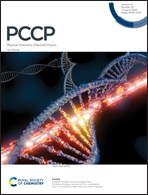Screening effect of CVD graphene on the surface free energy of substrates†
Abstract
The wettability of graphene has been a topic under constant discussion in the literature since 2012. In this work we measured the contact angle (CA) of six different types of substrates (glass, quartz, Si3N4, Si/SiO2, sapphire and Si) with varying dielectric constants and surface roughnesses in order to calculate the surface free energy of graphene films to evaluate how the wetting properties of graphene-coated substrates are changed according to the underlying substrate. We used a residual-free transfer process to remove the high-quality graphene (CVD-Gr) grown onto copper foil. Afterwards, we performed an inert thermal treatment (Ar, at 300 °C for 30 minutes) to remove airborne contaminants from the graphene surface and evaluate the roughness of substrates by atomic force microscopy, the advancing and receding contact angles of two liquids (water and ethylene glycol), hysteresis, and surface free energy (polar and dispersive components) calculations. The presence of high-quality monolayer graphene (free of any air contaminants, polymer residues, etc.) led to a common wettability behaviour for all coated surfaces, regardless of the nature of the underlying substrate. This result can be understood in terms of the screening of van der Waals and dipole interactions by the electrons in graphene.



 Please wait while we load your content...
Please wait while we load your content...